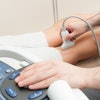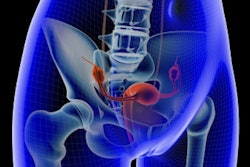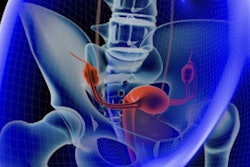Ultrasound data shows that family history of uterine fibroids is a risk factor for incident fibroids in Black and African American women, a study published April 3 in JAMA Network Open found.
Researchers led by Christine Langton, PhD, from the National Institute of Environmental Health Sciences in Research Triangle Park, NC, found that this trend was especially prevalent when mothers were diagnosed at a younger age. They also found that maternal history was tied to increased fibroid growth.
"While we confirmed that earlier maternal diagnosis had the strongest association with fibroid incidence, we were surprised that increased fibroid growth was associated with maternal history, but not maternal age at diagnosis," corresponding author Quaker Harmon, MD, PhD, told AuntMinnie.com.
The research team highlighted that uterine fibroids are an understudied condition, although previous studies have indicated that Black women experience earlier onset of fibroids than white counterparts. Prior research exploring potential ties between family history and fibroid development is limited by several factors, including reliance on hospital-based participant selection, poorly defined measures of family history, and nonsystematic fibroid assessment.
Langton and colleagues studied the potential of family history as a risk factor for fibroid development by using prospective ultrasonography data to identify incident fibroids. They also measured fibroid growth and standardized methods to find out family history.
The team included data from Black and African American women from the Detroit, MI area, with ultrasound exams performed between 2010 and 2018. Four standardized ultrasound exams were performed during a five-year period to detect fibroids 0.5 cm or larger in diameter and to measure fibroid growth.
The study included data from 1,610 Black and/or African American women ages 23 to 35. The women had no prior clinical diagnosis of fibroids at enrollment were available for analysis. A total of 1,187 participants were fibroid-free at enrollment. Of these, 442 (37%) had mothers who were diagnosed with fibroids.
Compared with participants without a maternal history of fibroids, women reporting maternal history had an adjusted hazard ratio of 1.21 (with 1 as reference). The team reported that risk was strongest in women whose mothers were diagnosed at a younger age. At 20 to 29 years at diagnosis, the adjusted hazard ratio was 1.56. At 30 to 39 years, it was 1.03, and at 40 years, it was 1.11 (p = 0.053 for the trend).
Finally, the researchers found that fibroid growth rates were higher when mothers were diagnosed with fibroids versus those not diagnosed, with an 8% increase in growth.
Harmon said that clinicians might consider proactive discussion of fibroid symptoms with their patients and encourage patients to discuss fibroids with family members.
"Furthermore, when patients present with undiagnosed conditions with symptoms common to various reproductive orders, soliciting information on family history of fibroids may provide insight for decisions pertaining to further assessment," she told AuntMinnie.com.
She added that the team is currently using residential history data to identify neighborhood characteristics to better understand their potential influence on fibroid development as part of the Study of Environment, Lifestyle & Fibroids (SELF).
In an accompanying editorial, Mya Roberson, PhD, from the University of North Carolina at Chapel Hill, wrote that with these findings in mind, epidemiology “does not exist in a sociopolitical vacuum, underscoring the need for multiple domains of expertise in characterizing disease burden.”
“This investigation … offers a critical example of how structural racism intersects with health services delivery that affects the fundamental epidemiologic understanding of a medical condition disproportionately experienced by Black women,” Roberson wrote.
The study can be found in its entirety here.



















